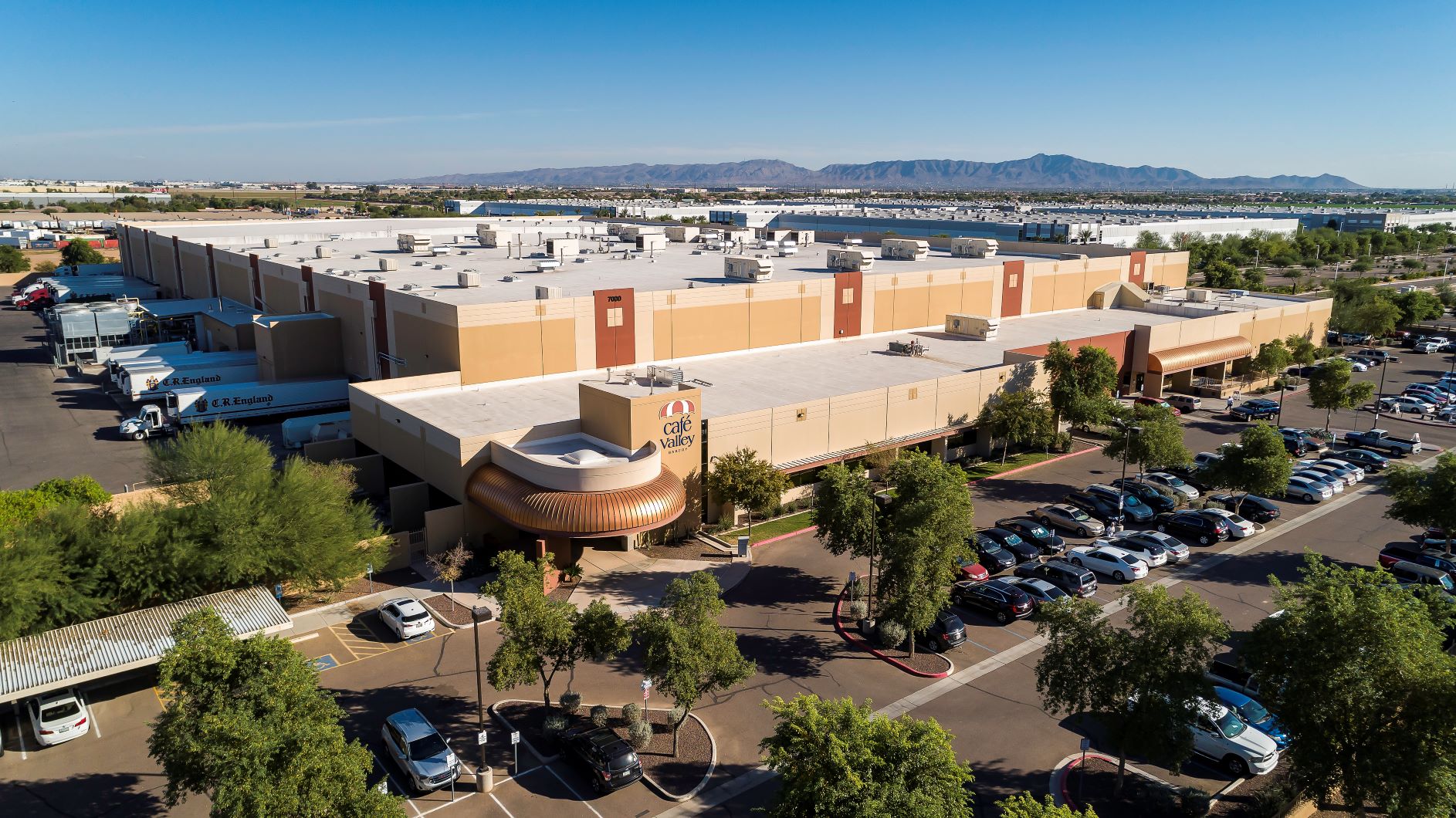In a turbulent year with overall U.S. commercial real estate volume decline, increased activity in some alternative investments and alternative property sectors was a bright spot for the industry. Alternatives like self-storage, life sciences, manufactured housing communities, medical office and data center assets were collectively responsible for more than $47.9 billion in transaction volume in 2020, bringing these non-traditional real estate assets more into focus as investors sought yield.
“Prior to the pandemic, investors were already expanding their focus and allocation to alternative assets, with the alternatives sectors’ share of overall transaction volume rising to nine percent between 2017 and 2019 versus six percent from 2005 to 2007,” said Matthew Lawton, JLL Capital Markets Co-Head of Investment Sales Advisory Group. “Underpinned by secular and cyclical drivers, many of the alternative asset classes are expected to generate among the highest risk-adjusted returns on a long-term basis of all property types.”
READ ALSO: Phoenix ranks No. 5 in U.S. for self-storage investment
While some of this demand is accelerated due to the pandemic, there is evidence that it is more than a passing phase. Alternatives, which also include student housing, cold storage and single-family rental, are benefiting from increased investment demand now for a variety of reasons. In the past when the industry faced challenges, investors shifted to the alternatives, but this time might be different. Large institutional investors are increasing allocations, causing more liquidity across the space. Additionally, more established operators are entering the space.
When you look at the size of the alternatives individually, the different asset classes are smaller in transaction volume scale than their traditional counterparts; however, they are growing rapidly. They also offer investors an opportunity to diversify their portfolios along with opening the door to investors looking to enter commercial real estate ownership.
Each sub-class within alternatives showed varying levels of resilience throughout 2020 but they all share positive outlooks for continued growth.
“We are seeing a big uptick with core investors educating themselves and moving capital into the alternatives space as they evolve their portfolio allocation strategy,” said Coleman Benedict, Co-Head of JLL’s Investment Sales Advisory Group. “At the same time, what is tempering their ability to make big strides is the fact that many of these sectors are still quite small in terms of investable stock, yet demonstrating significant rent growth and occupancy demand drivers as disruptive market forces play out.”
Data Centers
Data centers benefited from the increased demand for digital connectivity, e-commerce and consumer usage of applications over the past year. Looking ahead, even more adoption of technology and greater growth of cloud services will drive further demand for data centers.
Cold Storage
E-commerce adoption, evolving consumption patterns and the reshoring of essential sectors – all accelerated due to COVID-19 and various levels of stay-at-home orders – are driving short- and long-term demand for more refrigerated warehouse space. Additional factors leading to stronger investor interest in the space are the consolidation of the public sector and private equity groups entering the cold storage market. In 2021, JLL anticipates more speculative construction of cold storage projects, driven by the needs to combat high renovation costs and design complexity.
Life Sciences
JLL Research predicts 16 percent growth for brand-name pharmaceutical manufacturing through 2025.
Even before the global demand for COVID-19 tests, treatments and vaccines pushed the life sciences sector further into the spotlight as a vital, durable, expansionary asset class, these properties were offering investors significant upside, and the sector had $10.41 billion in 2020 transactions. Talent, funding and innovation within major market drivers are leading to a clustering effect, with Boston, San Francisco, San Diego, Maryland and the Raleigh-Durham areas ranked as the top-five clusters in 2020. Additionally, an aging population is leading to greater demand for medical innovation at the same time onshoring is driving accelerated demand for U.S. lab and pharmaceutical manufacturing space.
Manufactured Housing Communities
Transaction volume for manufactured housing communities increased 32.2 percent, from $3.2 billion in 2019 to $4.2 billion in 2020. Valuations are also trending upward. As the supply of manufactured homes has been slowly declining due to zoning restrictions and core development expansion, the increased need for affordability is expected to push net demand upward. Additionally, institutional investment is expected to increase driven by the sector’s resilient performance.
Medical Office Buildings
Medical office buildings performed exceptionally during the pandemic with high rent collections and not missing a beat on the sector’s 20-year history of consistent 92 percent occupancy, reinforcing the durable income investment thesis for outpatient care. Medical office sales totaled $13.2 billion in 2020, in line with 2019 and 2018 and near peak 2017 trades. In 2021, medical office remains a favored asset class for investors and has generated a significant supply of new investment capital – both debt and equity – waiting to be deployed, providing a liquid and competitive market for sellers. The sector is expected to keep expanding as advances in technology and patient-centric care are driving outpatient care and in lower cost settings, with demand for healthcare services fueled by a growing and aging population.
Self-Storage
With $4.36 billion in transaction volume, self-storage was resilient through 2020 and continues to attract increased attention from institutional investors. The self-storage industry is evolving to deliver a more sophisticated product with the adaptation of new technology, including smart systems like biometric security and remote monitoring. People are still moving and storing their household goods during the pandemic, allowing the self-storage market to uphold the demand seen in 2019.
Seniors Housing
The seniors housing market, which was relatively healthy prior to COVID-19, was one of the property sectors most impacted by the pandemic. As more people are vaccinated, occupancy levels that dipped in 2020 should increase. The seniors housing market is poised to recover relatively quickly and to deliver strong long-term returns. This is largely due to the demographic tailwinds created by the aging U.S. population; the first of the Baby Boomers will turn 75 in 2021 and then hit 80 in 2026, with the number of persons 75 and over doubling between 2020 and 2045. This growth, coupled with loosening of the labor market, signals seniors housing is an investment with solid long-term fundamentals and the ability to deliver strong returns for decades to come.
Single-Family Rental
In the United States, the single-family rental (SFR) sector comprises 16 million housing units that have traditionally consisted of mom-and-pop investors. Now low inventory and renter demand have fueled a surge of institutional and private investor interest in SFR investments. Rents in institutionally owned portfolios have grown more than three percent on an annualized basis. Additionally, proptech like Roofstock enables investors to manage portfolios in ways that didn’t previously exist.
Student Housing
The U.S. is home to the second highest number of post-secondary institutions in the world, creating robust demand for student housing. Over the last two decades, the sector, which accounted for $5.96 billion in transactions in 2020, has institutionalized due to increased enrollment over the past eight economic downturns, imbalance between supply and demand for on-campus housing and the value proposition for higher education. JLL’s Global Real Estate Perspective discusses how lockdowns and restrictions did impact the student housing sector but investor confidence remains high, as the asset’s fundamentals will last beyond the current challenges. Additionally, fragmented and obsolete campus housing will continue to propel the student housing sector.
JLL Capital Markets is a full-service global provider of capital solutions for real estate investors and occupiers. The firm’s in-depth local market and global investor knowledge delivers the best-in-class solutions for clients — whether investment sales advisory, debt placement, equity placement or a recapitalization. The firm has more than 3,700 Capital Markets specialists worldwide with offices in nearly 50 countries.




